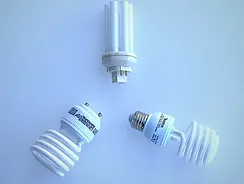Let's begin by defining ballasts.
Any type of heavy material put low in a ship to increase stability is referred to as a ballast outside of the lighting industry. Any time a ballast is mentioned in this text, it refers to a lighting ballast.
A lighting ballast stabilizes a light bulb or lamp, just like a ship ballast does.
It offers this stability by producing the voltage required to turn on a lamp and then continuing to control the current flow while the bulb is operating. Because the bulb alone cannot control this electrical current, it would rapidly burn out without a ballast.
Types of Ballast Technology
Older technology, magnetic ballasts are still produced for HID lamps like metal halides and high-pressure sodium lamps but are no longer made for fluorescent lights. Fluorescent lights used to hum and flicker because magnetic ballasts modulated electricity at a slower cycle rate. Because of their low cost, long lifespan, and adaptability, core and coil are popular; nevertheless, they are also loud, so for interior applications, especially in quiet settings, you usually prefer an F-can ballast or an upgrade to an electronic HID ballast.
Magnetic ballasts are being replaced in many contexts by electronic ballasts, a more recent technology. They control energy more effectively than magnetic ballasts, which lowers the cost of running lights.
To shield the internal components, magnetic ballasts in the 1940s were the size of a house brick and filled with tar. Magnetic ballasts may be loud, producing a humming noise in the background, and they waste energy controlling the power going to the lamps.
Due to the complexity of resistance, inductance, and reactance, ballasts are an exciting component of the fluorescent bulb lighting system. Replacements with high power and efficient electronic T8 ballast gained favor as they became more accessible. In the 1990s, the usage of electronic ballasts swiftly increased, mainly due to lower operating costs.
They are far more energy-efficient, quieter, emit less heat, and are smaller and lighter than magnetic ballasts, allowing them to be put in sleeker, more aesthetically pleasing devices. Although some older models with separate, replaceable choke units are still available for purchase, the technology is highly outdated.
Advantages of Electronic ballast
Conserving energy
The lamp tube is powered by a fluorescent ballast that operates between 20 and 60 kHz, resulting in a lamp tube with a luminous efficiency that is around 10% greater than the power frequency. Because of its low internal power consumption, the lamp's overall input power is lowered by around 20%, which has a more significant impact on energy conservation.
Remove the strobe flash and improve the stability of light output.
The electronic ballast can increase the effectiveness and resolution of the display. After prolonged use, it can also lessen visual fatigue, which can preserve our vision.
Consistent output luminous flux and input power.
High-quality electronic ballasts work well in terms of voltage stability. The light source can still maintain constant power and steady the luminance even when the power and voltage fluctuations are significant, which is advantageous for energy conservation.
Increase life.
High-quality products' steady power, the current lamp reduction, and the steady starting point may prolong the lamp's life.
Minimal noise
High-quality electronic ballasts can produce noise below 35 dB, which humans cannot perceive.
It is dimmable
Replace incandescent or tungsten halogen bulbs in areas that require dimming with high-efficiency fluorescent lights equipped with dimmable electronic ballasts, which can accomplish wide-range dimming from 2% to 100%.
Ballast Compatibility
When the LED bulb you've selected is a Type A model, it matters much. This bulb rapidly replaces the fluorescent T8 by directly working with the current ballast. Before making any replacement light purchases, make sure to look over this list. For Type B LED bulbs require more complex installations. Ballast compatible LEDs are easily found in the market and also online.
Final thoughts!
It is essential to contact a qualified electrician to do the job. Understanding how the ballasts affect your fixture, the installation procedure, and general maintenance will help you make the best choice for your needs in lighting.


No comments yet